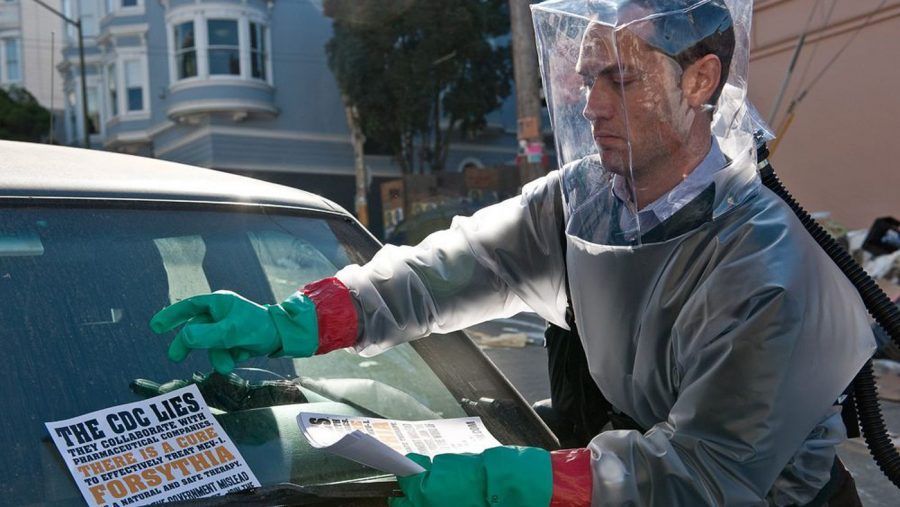COVID vs CONTAGION
A scene from Contagion seems to resemble the behavior of some during the recent COVID-19 outbreak.
October 4, 2020
Have our lives become similar to movies portraying pandemics because of COVID-19? As far as pandemics go, Contagion hits pretty close to home. This movie surprisingly illustrates many common factors that have occurred during this pandemic, but it has some minor errors.
For example, the 2011 Thriller Contagion was about a young woman, Beth Emhoff, who returns to Minnesota from a business trip in Hong Kong. She begins feeling malaise, which she instantly attributes to jet lag. Two days later she dies of an unknown cause, but not before she spreads her disease. Eventually, doctors identify this virus as MEV-1. All the while, doctors and scientists race against the clock to find the source of MEV-1 and a vaccine.
In the film, there were a sufficient amount of similarities alike to what we are experiencing that proved how much scientific evidence was included in Contagion. For instance, the idea of the virus transference that was shown in the movie was portrayed perfectly. In the movie, they displayed how easy it was to get the virus from just touching something or someone that has been infected and then being careless as to touch your mouth, eyes, or nose. In addition, as referenced in the movie, people’s reactions to the virus impacted society, which seems to be happening in real life. For example, as shown in the movie and plenty of news stories around the world, there has been great distress among citizens. This suggests how people feel and react to sudden changes.
While the movie includes some legitimate evidence, there are a couple of factors in the movie that are a little out of the realm of possibility. According to NewScientist the “ MEV-1, the film’s fictional virus, is modeled upon the bat born Nipah virus, … in the film, MEV-1 kills people within days, but in real life, the incubation period for the Nipah -and many deadly viruses- is more like 2 weeks.” In other words, NewScientist thinks that the movie might have had some errors in the creation of the fictional virus, proving that the film is not entirely accurate. For example, the fictional virus developed a lot quicker. In addition, in the movie, it took 4 months to find the source and vaccine for the virus, whereas we are still six months into the Coronavirus with very little progression for a vaccine.
Our very own Yorba Linda High School biology teacher, Mr. Gomez (staff), gave us some of his input about the movie and its real-life relations. Mr. Gomez stated, “MEV-1 virus, the fictional virus, was very contagious in the movie and had a death rate of 1 in 12. Currently, Coronavirus doesn’t show any of the same transmission rates and is not as deadly. However, we have lost a number of American lives and a number of lives around the world. Although it isn’t as deadly as the movie would indicate, Coronavirus is something that is impacting our society, changing our behavior patterns, and impacting what we do as communities.”
Therefore, it’s safe to say that there is plenty of evidence that points to both the comparisons and the differences in the movies virus and our coronavirus. The movie has provided some pretty funny predictions, causing the searches for this movie to skyrocket. Although, not everything corresponds with real-life.






































faith desio • Oct 10, 2020 at 5:16 PM
Awesome article! Just watched the movie myself and it is insane how similar COVID and the virus in the movie are! Great article!!